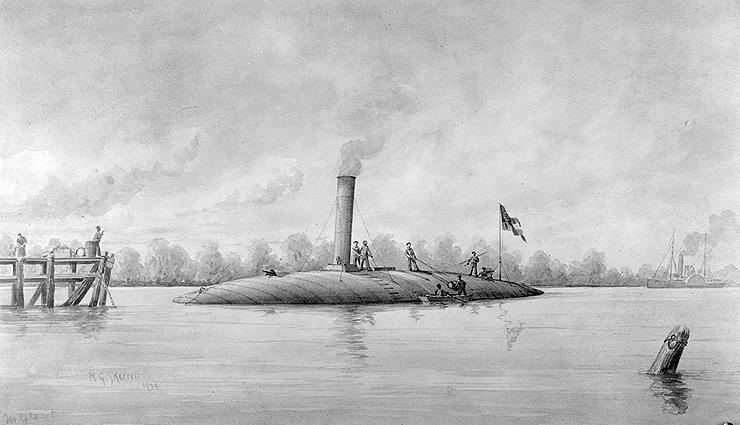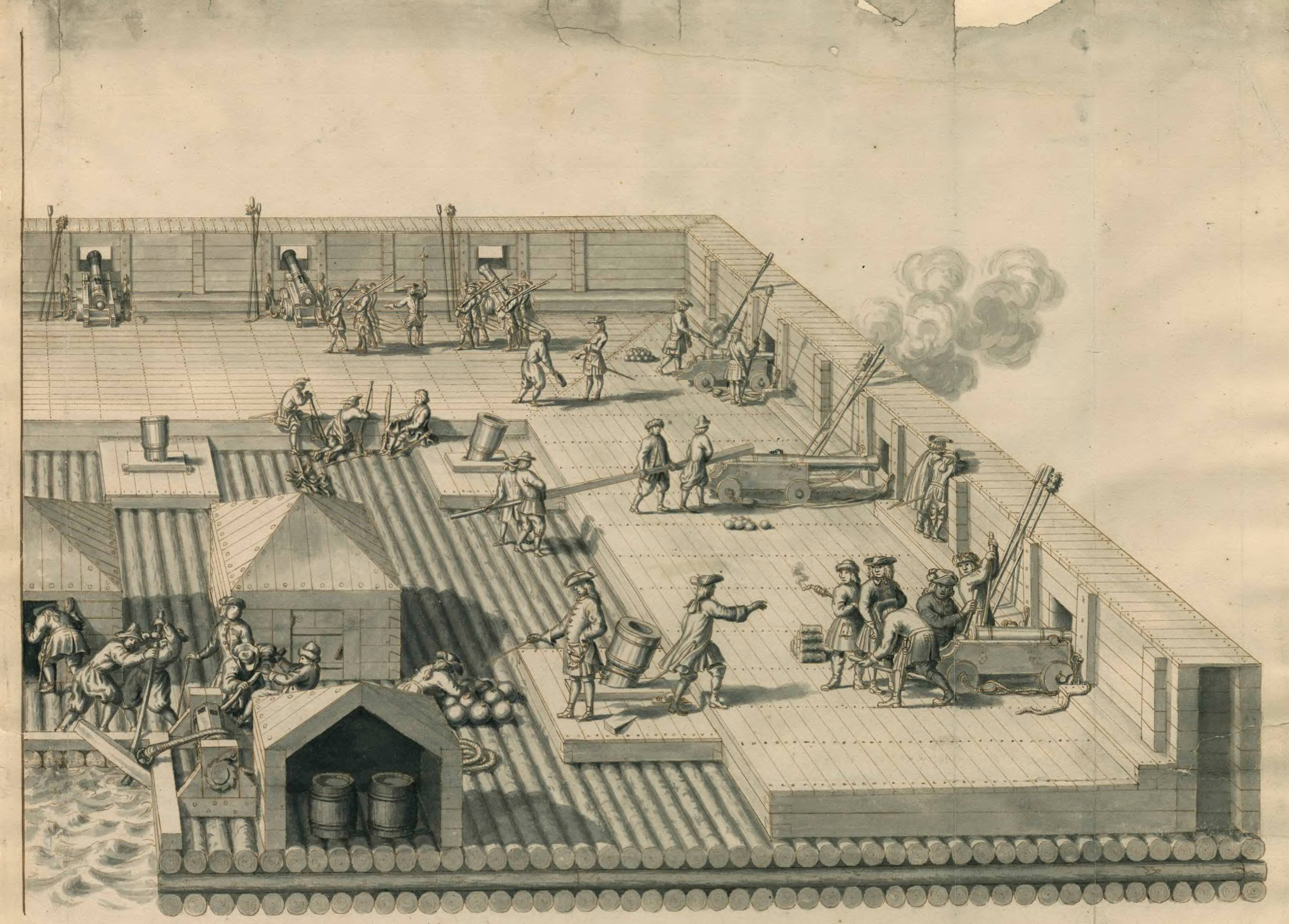|
Ram Bow
A ram on the bow of ''Olympias'', a modern reconstruction of an ancient Athenian trireme A naval ram is a weapon fitted to varied types of ships, dating back to antiquity. The weapon comprised an underwater prolongation of the bow of the ship to form an armoured beak, usually between in length. This would be driven into the hull of an enemy ship to puncture, sink or disable it. Antiquity It was possibly developed in late Bronze Age Egypt, but it only became widely used in later Iron Age Mediterranean galleys. The ram was a naval weapon in the Greek/ Roman antiquity and was used in such naval battles as Salamis and Actium. Naval warfare in the Mediterranean rarely used sails, and the use of rams specifically required oarsmen rather than sails in order to maneuver with accuracy and speed, and particularly to reverse the movement of a ramming ship to disentangle it from its sinking victim, lest it be pulled down when its victim sank. The Athenians were especially known fo ... [...More Info...] [...Related Items...] OR: [Wikipedia] [Google] [Baidu] |
Olympias
Olympias (; c. 375–316 BC) was a Ancient Greeks, Greek princess of the Molossians, the eldest daughter of king Neoptolemus I of Epirus, the sister of Alexander I of Epirus, the fourth wife of Philip of Macedon, Philip II, the king of Macedonia (ancient kingdom), Macedonia and the mother of Alexander the Great. She was extremely influential in Alexander's life and was recognized as ''de facto'' leader of Macedon during Alexander's conquests. According to the 1st century AD biographer, Plutarch, she was a devout member of the orgiastic snake-worshiping cult of Dionysus, and he suggests that she slept with snakes in her bed. After her son's death, Olympias fought on behalf of Alexander's son Alexander IV of Macedon, Alexander IV, successfully defeating Adea Eurydice. After she was finally defeated by Cassander, his armies refused to execute her, and he finally had to summon family members of those Olympias had previously killed to end her life. Origin Olympias was the eldest daug ... [...More Info...] [...Related Items...] OR: [Wikipedia] [Google] [Baidu] |
Wale (ship Part)
A wale is one of the strakes of wooden planking that forms the outer skin of the hull of a ship, but substantially thicker than the other strakes. It provides extra stiffening and strength to the hull. It was a common feature of heavy wooden ship construction, particularly from the Middle Ages to the early years of the 19th century, being a major constructional component of ships like , and many earlier vessels. A wale (or "waler") is a horizontal supporting member of a concrete forming system, vertically reinforced by a "strongback". A wale is also a horizontal member of a geotechnical tieback wall, which transmits the force from the tieback to the beams. See also *Strake On a vessel's Hull (watercraft), hull, a strake is a longitudinal course of Plank (wood), planking or Plate (metal), plating which runs from the boat's stem (ship), stempost (at the Bow (ship), bows) to the stern, sternpost or transom (nautica ... References External links *{{wiktionary-inline, w ... [...More Info...] [...Related Items...] OR: [Wikipedia] [Google] [Baidu] |
Armour
Armour (Commonwealth English) or armor (American English; see American and British English spelling differences#-our, -or, spelling differences) is a covering used to protect an object, individual, or vehicle from physical injury or damage, especially direct contact weapons or projectiles during combat, or from a potentially dangerous environment or activity (e.g. cycling, construction sites, etc.). Personal armour is used to protect soldiers and war animals. Vehicle armour is used on warships, armoured fighting vehicles, and some combat aircraft, mostly ground attack aircraft. A second use of the term ''armour'' describes Division (military)#Armoured division, armoured forces, #Armoured fighting vehicles, armoured weapons, and their role in combat. After the development of armoured warfare, tanks and mechanised infantry and their combat formations came to be referred to collectively as "armour". Etymology The word "armour" began to appear in the Middle Ages as a derivati ... [...More Info...] [...Related Items...] OR: [Wikipedia] [Google] [Baidu] |
Belt Armor
Belt armor is a layer of heavy metal armor plated onto or within the outer hulls of warships, typically on battleships, battlecruisers and cruisers, and aircraft carriers. The belt armor is designed to prevent projectiles from penetrating to the heart of a warship. When struck by an artillery shell or underwater torpedo, the belt armor either absorbs the impact and explosion with its sheer thickness and strength, or else uses sloping to redirect the projectile and its blast downwards. Typically, the main armor belt covers the warship from its main deck down to some distance below the waterline. If, instead of forming the outer hull, the armor belt is built inside the hull, it is installed at a sloped angle for improved protection, as described above. The torpedo bulkhead Frequently, the main belt's armor plates were supplemented with a torpedo bulkhead spaced several meters behind the main belt, designed to maintain the ship's watertight integrity even if the main belt ... [...More Info...] [...Related Items...] OR: [Wikipedia] [Google] [Baidu] |
Battle Of Hampton Roads
The Battle of Hampton Roads, also referred to as the Battle of the ''Monitor'' and ''Merrimack'' or the Battle of Ironclads, was a naval battle during the American Civil War. The battle was fought over two days, March 8 and 9, 1862, in Hampton Roads, a roadstead in Virginia where the Elizabeth River (Virginia), Elizabeth and Nansemond River, Nansemond rivers meet the James River just before it flows into Chesapeake Bay by the city of Norfolk, Virginia, Norfolk. The battle was a part of the effort of the Confederate States of America, Confederacy to break the United States Navy, Union blockade, which had cut off Virginia's largest cities and major industrial centers, Norfolk and Richmond, Virginia, Richmond, from international trade.Musicant 1995, pp. 134–178; Anderson 1962, pp. 71–77; Tucker 2006, p. 151. At least one historian has argued that, rather than trying to break the blockade, the Confederacy was simply trying to take complete control of Hampton Roads in order to pro ... [...More Info...] [...Related Items...] OR: [Wikipedia] [Google] [Baidu] |
CSS Virginia
CSS ''Virginia'' was the first steam-powered ironclad warship built by the Confederate States Navy during the first year of the American Civil War; she was constructed as a casemate ironclad using the razéed (cut down) original lower hull and engines of the scuttled steam frigate . ''Virginia'' was one of the participants in the Battle of Hampton Roads, opposing the Union's in March 1862. The battle is chiefly significant in naval history as the first battle between ironclads. USS ''Merrimack'' becomes CSS ''Virginia'' When the Commonwealth of Virginia seceded from the Union in 1861, one of the important US military bases threatened was Gosport Navy Yard (now Norfolk Naval Shipyard) in Portsmouth, Virginia. Accordingly, orders were sent to destroy the base rather than allow it to fall into Confederate hands. On the afternoon of 17 April, the day Virginia seceded, Engineer in Chief B. F. Isherwood managed to get the frigate's engines lit. However, the previous night sec ... [...More Info...] [...Related Items...] OR: [Wikipedia] [Google] [Baidu] |
Henri Dupuy De Lôme
Stanislas Charles Henri Dupuy de Lôme (; 15 October 18161 February 1885) was a French naval architect. He was the son of a naval officer and was born in Ploemeur near Lorient, Brittany, in western France. He was educated at the École Polytechnique and ENSTA. He was particularly active during the 1840–1870 period. After finishing his professional education, he went to England about 1842, and made a thorough study of iron shipbuilding and steam navigation. He wrote a report, subsequently published under the title of ''Mémoire sur la construction des bâtiments en fer'' in 1844. The first steam battleship After his return from England, Dupuy de Lôme started work at the arsenal in Toulon. At the time the only armed steamships in the French Navy were propelled by paddle-wheels, and there was great opposition to the introduction of steam power into line-of-battle ships. The paddle-wheel was seen to be unsuited to such large fighting vessels, and there was no confidence in the ... [...More Info...] [...Related Items...] OR: [Wikipedia] [Google] [Baidu] |
Nicolas Hippolyte Labrousse
Nicolas or Nicolás may refer to: People Given name * Nicolas (given name) Mononym * Nicolas (footballer, born 1999), Brazilian footballer * Nicolas (footballer, born 2000), Brazilian footballer Surname Nicolas * Dafydd Nicolas (c.1705–1774), Welsh poet * Jean Nicolas (1913–1978), French international football player * Nicholas Harris Nicolas (1799–1848), English antiquary * Paul Nicolas (1899–1959), French international football player * Robert Nicolas (1595–1667), English politician Nicolás * Adolfo Nicolás (1936–2020), Superior General of the Society of Jesus * Eduardo Nicolás (born 1972), Spanish former professional tennis player Other uses * Nicolas (wine retailer), a French chain of wine retailers * ''Le Petit Nicolas'', a series of children's books by René Goscinny See also * San Nicolás (other) * Nicholas (other) * Nicola (other) * Nikola Nikola () is a given name which, like Nicholas, is a version of the Greek '' Nikola ... [...More Info...] [...Related Items...] OR: [Wikipedia] [Google] [Baidu] |
CSS Manassas
CSS ''Manassas'', formerly the steam icebreaker ''Enoch Train'', was built in 1855 by James O. Curtis as a twin-screw towboat at Medford, Massachusetts, Medford, Massachusetts. A New Orleans commission merchant, Captain (naval), Captain John A. Stevenson, acquired her for use as a privateer after she was captured by another privateer (later gunboat) . Her fitting out as ''Manassas'' was completed at Algiers, Louisiana, Algiers, Louisiana; her conversion to a Naval ram, ram of a radically modern design made her the first ironclad ship built for the Confederate States of America, Confederacy. Description Covered with iron plating, her above-water hull was reshaped into a curved "turtle-back" form; at its lowest when fully loaded, the hull projected only feet above the waterline, not counting her smokestacks (surviving accounts and period illustrations vary showing ''Manassas'' was equipped with either a single or two side-by-side smokestacks, possibly slanted back at a rakish a ... [...More Info...] [...Related Items...] OR: [Wikipedia] [Google] [Baidu] |
Floating Battery
A floating battery is a kind of armed watercraft, often improvised or experimental, which carries heavy armament but has few other qualities as a warship. History During the Capture of Mahdia (1550), capture of Mahdia in 1550, Spanish captain García Álvarez de Toledo y Osorio, Garcia de Toledo Osorio built a floating battery to bombard the city. The fortified, nine-gun battery was built over two galleys and became decisive to take the position. Use of Timber rafting, timber rafts loaded with cannon by Danish defenders of Copenhagen against bomb ketches of a combined British-Dutch-Swedish fleet is attested by Nathaniel Uring in 1700. In 1727, Spanish engineer Juan de Ochoa proposed King Philip V of Spain, Philip V his project of the ''barcaza-espín'' ("barge-porcupine"), heavily armored floating batteries moved by rows and fitted with multiple naval ram, rams. The end of the Anglo-Spanish War (1727–1729), Anglo-Spanish War, however, buried the project before it coul ... [...More Info...] [...Related Items...] OR: [Wikipedia] [Google] [Baidu] |






